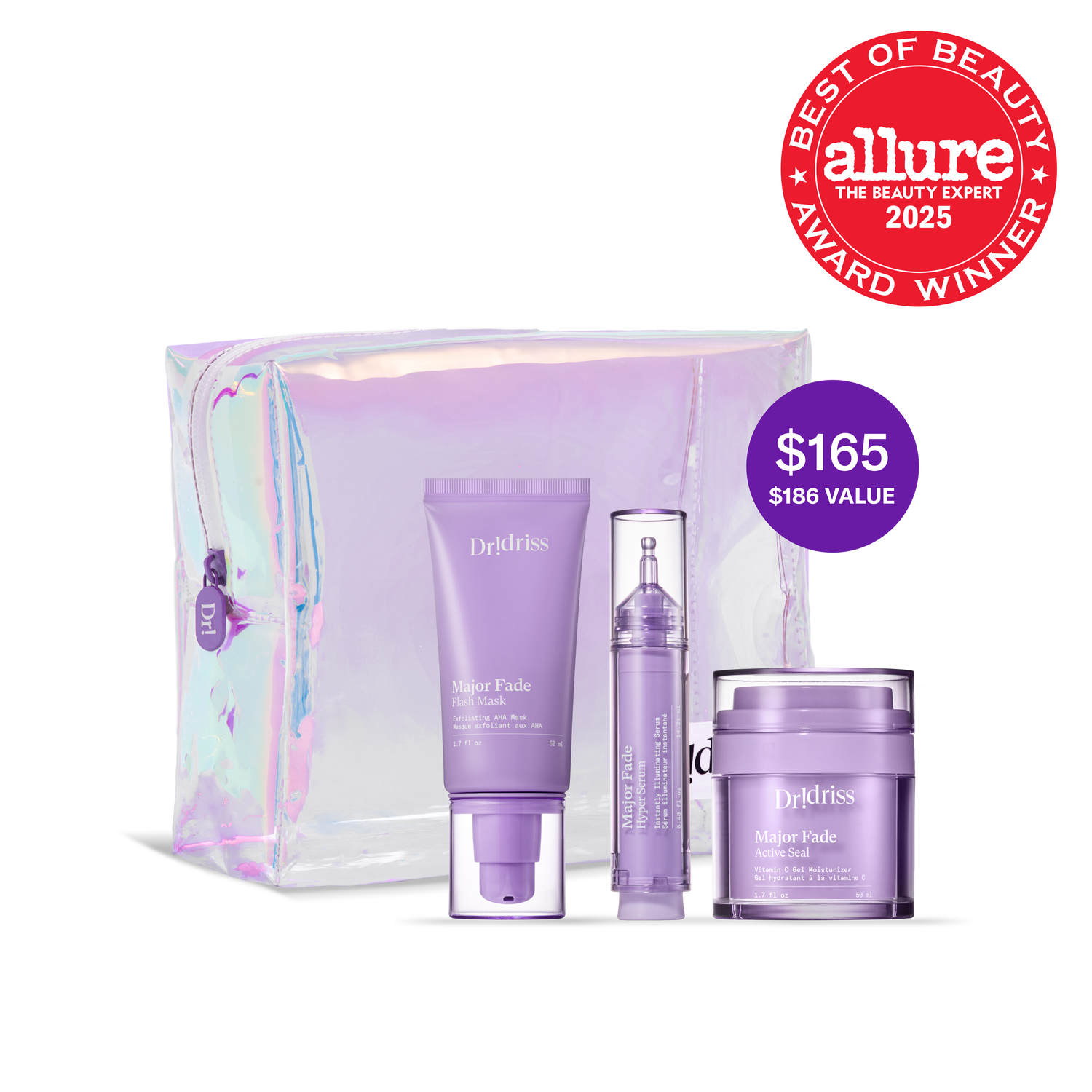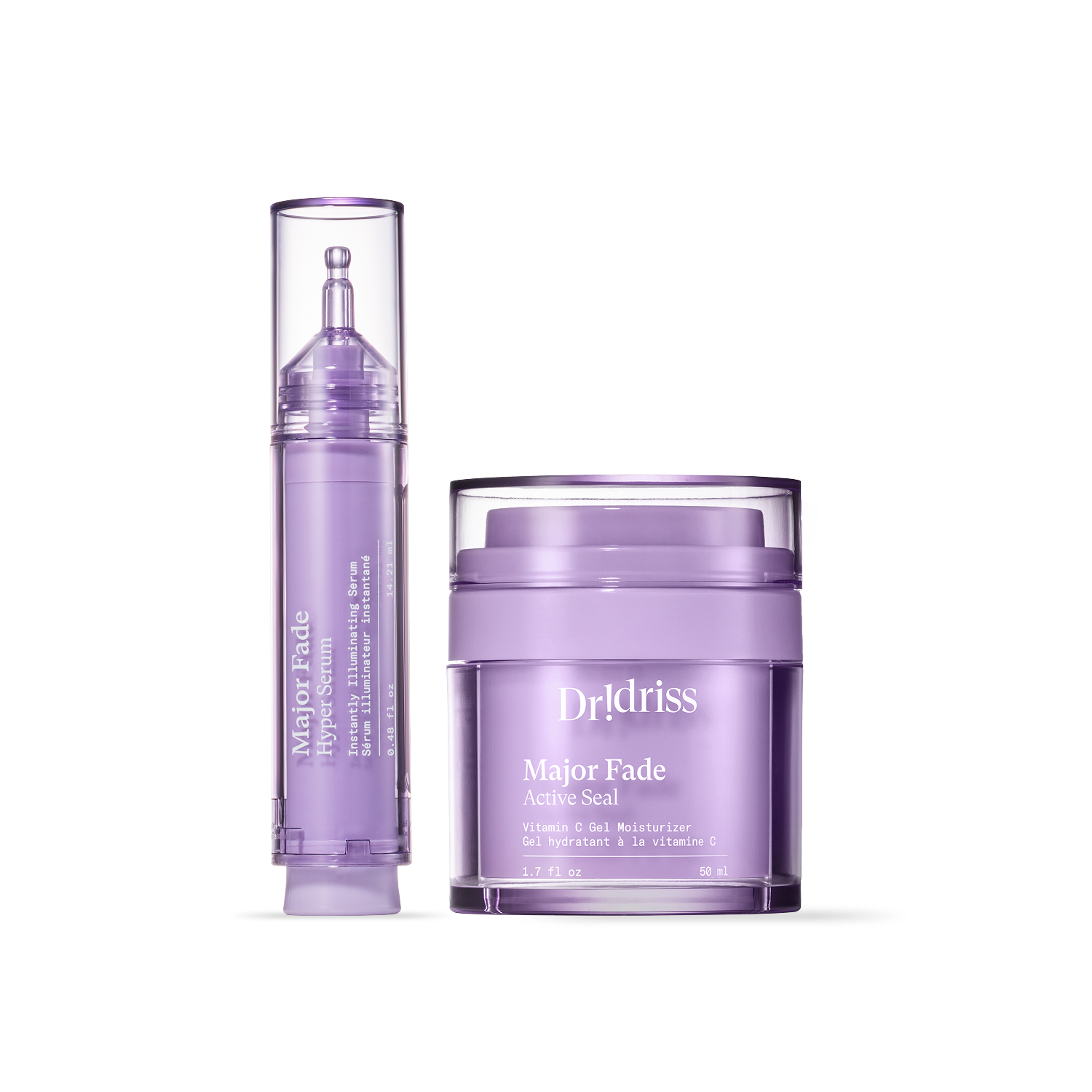Pigmentation is not clear-cut. It's never going to be about a single ingredient story.
Today, we're going to cover the 10 most important ingredients that you need when tackling hyperpigmentation or discoloration.
How Is Pigment Produced?
When you're making pigment, there are many different points along the “pigment pathway” that can get blocked. In order to treat pigmentation, a really solid skincare routine includes ingredients that address the pathway at various checkpoints, so you have a holistic approach at treating hyperpigmentation.
A crash course on the pigment pathway:
- Melanocytes are the cells that make the pigment in our epidermis. The melanocytes make melanin, which gives our skin its color.
- Within the melanocytes, there is an enzyme known as tyrosinase which is the key enzyme at creating melanin.
- Once the melanin is made within the melanocyte, it gets transferred into tiny little packages known as melanosomes.
- These tiny little packages then get distributed throughout the epidermis to give the color of our skin.
This gets ramped up in states where hyperpigmentation gets produced and it also can be calmed down when treated correctly. So, knowing this, we can address hyperpigmentation at the different points of the pathway:
- the melanocyte, the actual cell,
- inside the melanocyte when melanin is made,
- the transfer of melanin into the melanosomes,
- and the transfer of the melanosomes out into the epidermis.
IN A NUTSHELL:
[ Pigment is created along different points of the pigment pathway → Include ingredients in your skincare routine that reach the different points in the pigment pathway→ A holistic approach to treating hyperpigmentation ]
What does this mean for your skincare routine?
Watch this video where Dr. Shereene Idriss breaks down the 10 key ingredients that tackle hyperpigmentation at different levels.

















